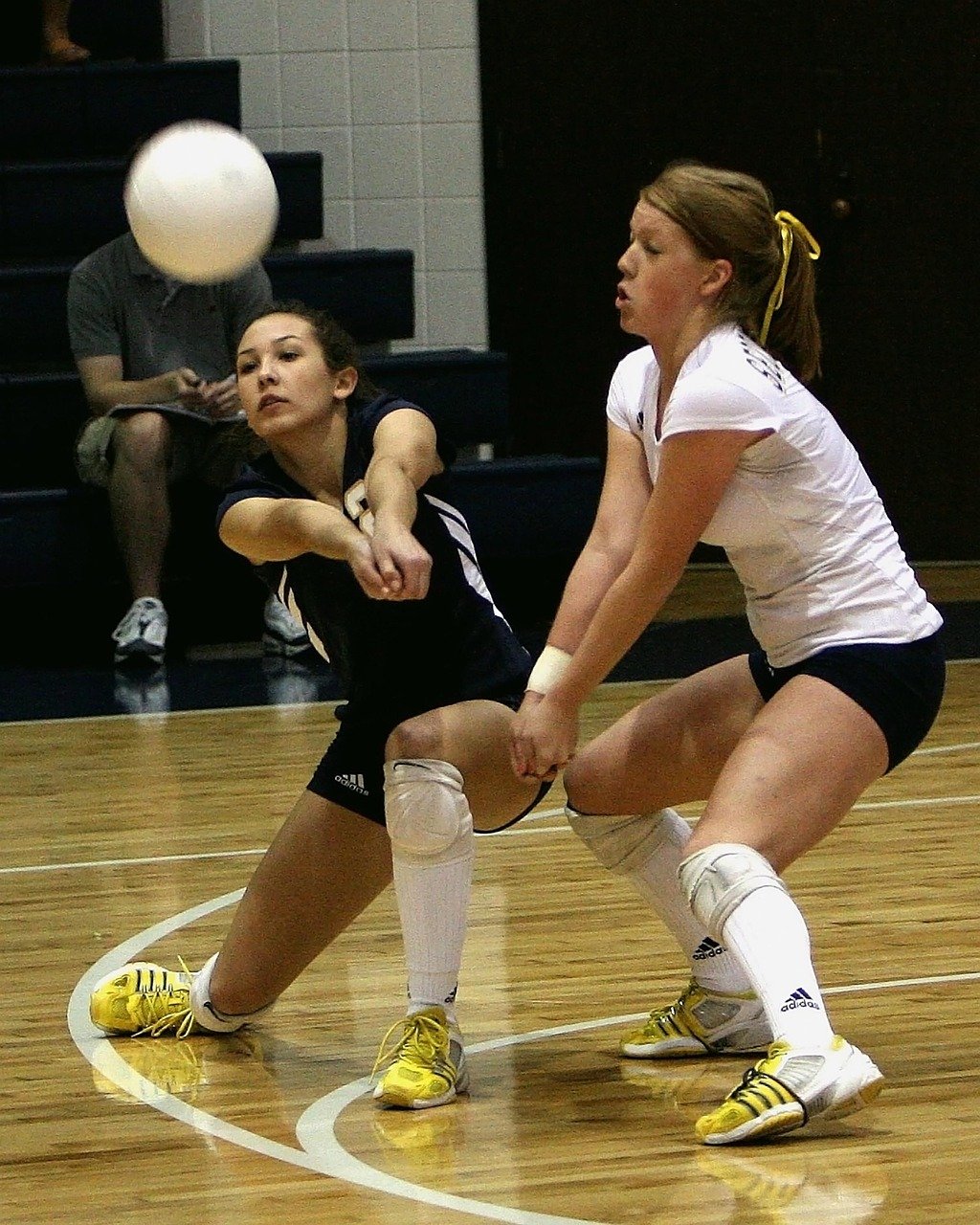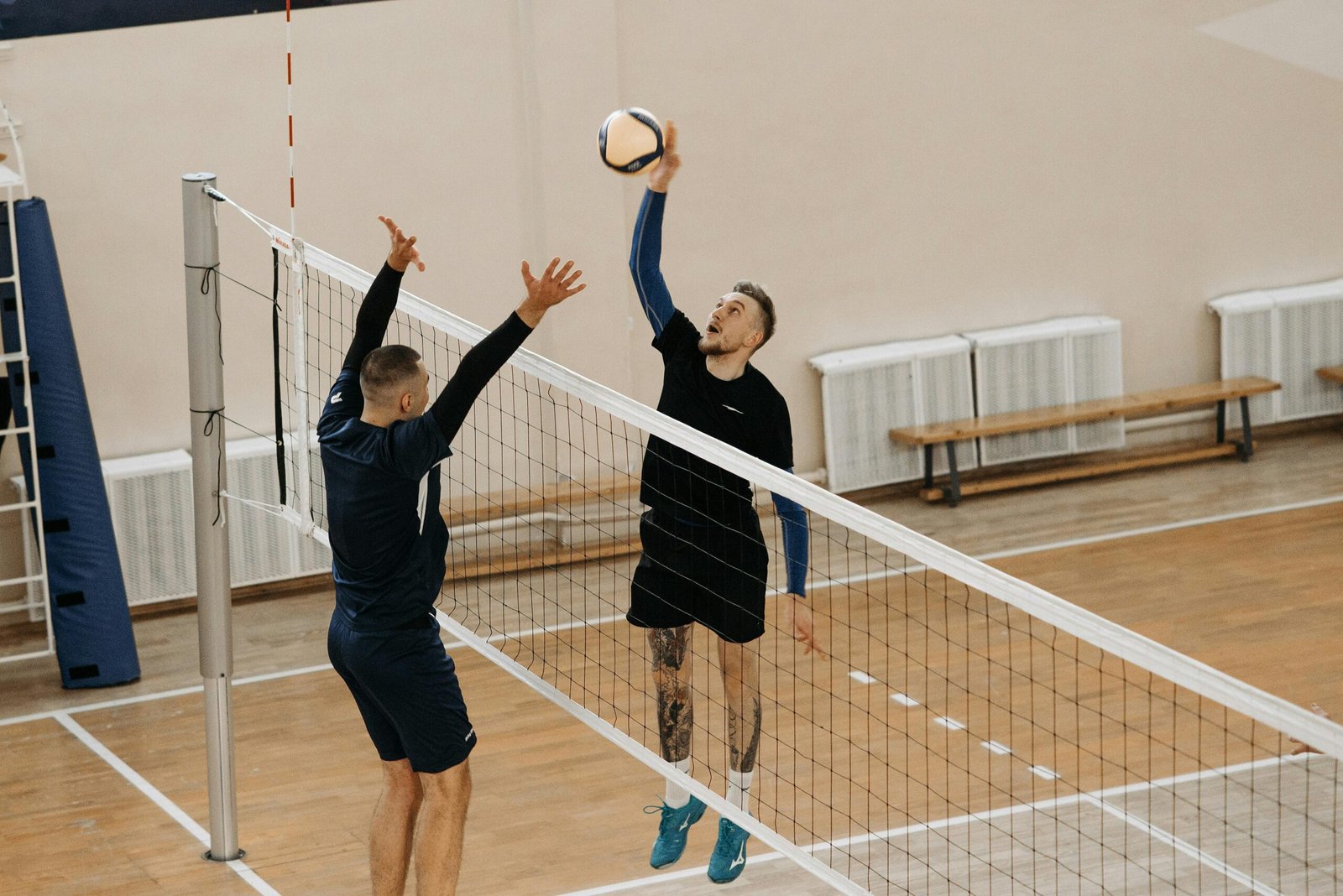Blocking is a crucial skill in volleyball, and understanding the different types of blocks is essential for strong net defence. The cross-court block is designed to intercept attacks that are aimed diagonally across the court. This type of block is commonly used to defend against outside hitters and strategic attacks that attempt to exploit angles.
This guide will cover everything you need to know about cross-court blocking, including techniques, positioning, timing, drills, and common mistakes, providing players and coaches with the tools to dominate at the net.
What is a Cross-Court Block?
A cross-court block occurs when a front-row player positions themselves to defend against an attacker who is hitting the ball diagonally across the court. Unlike line blocks, which cover attacks along the sideline, cross-court blocks focus on cutting off the angled path of the spike, reducing the attacker’s options.
The main goal of a cross-court block is to:
- Force attackers to alter their angle and hit along the line instead.
- Deflect or stop the ball directly for a point.
- Create opportunities for the team to transition into offence.
Cross-court blocks are particularly effective against outside hitters, who often use cross-court attacks as their primary scoring method.
Why Cross-Court Blocks Are Important
Cross-court blocks are essential for several reasons:
- Controlling Attacking Angles: Narrowing diagonal paths limits the opponent’s options.
- Supporting Back-Row Defence: Proper cross-court blocking guides back-row players to anticipate deflections and tips.
- Creating Psychological Pressure: Attackers are forced to adjust their timing and shot selection when facing consistent cross-court blocks.
- Scoring Opportunities: Well-executed blocks can deflect the ball for immediate points.
Teams that master cross-court blocking can dictate net play and disrupt opponent strategies.
Technique for Performing a Cross-Court Block
1. Positioning
- Stand near the middle of your assigned blocking zone.
- Slightly angle your shoulders toward the expected diagonal attack.
- Keep knees bent and maintain a low stance for balance and quick movement.
2. Hand Placement
- Extend hands straight up with fingers spread wide.
- Angle your hands slightly toward the expected cross-court path.
- Keep wrists firm to control the ball and direct it back toward the opponent’s court.
3. Timing the Jump
- Observe the hitter’s approach and arm swing.
- Jump slightly before the attacker contacts the ball to meet it at its peak.
- Avoid jumping too early, as it may allow the attacker to hit around the block.
4. Body Control
- Engage your core for stability mid-air.
- Land with knees bent to absorb impact and prepare for the next play.
- Keep eyes on the hitter throughout the block.
5. Reading the Attacker
- Watch shoulder angle, arm swing, and approach to predict the attack direction.
- Adjust hand angle mid-air to intercept the diagonal trajectory effectively.
- Be prepared to shift slightly for tips or roll shots aimed at the cross-court.
Scenarios for Cross-Court Blocks
Cross-court blocks are most effective in these situations:
- Outside Hitter Attacks: When the attacker uses the cross-court path as a primary scoring option.
- Combination Attacks: When multiple attackers create angles to force defensive mistakes.
- Back-Row Coverage: Helps guide back-row defenders to anticipate balls deflected from the block.
- Quick Sets and Tips: Forces attackers to adjust their technique, making timing errors more likely.
Understanding these scenarios allows blockers to position themselves optimally and anticipate the attacker’s intentions.
Drills to Improve Cross-Court Blocking
- Diagonal Target Drill:
- Hitters spike diagonally while blockers focus on intercepting the cross-court angle.
- Repeat with varying speeds and heights.
- Mirror Drill:
- Blockers mirror hitters’ movements to practise tracking diagonal attacks.
- Focus on hand positioning and timing adjustments.
- Timing Drill:
- Simulate different set types and attack angles.
- Practise jumping at the right moment to meet the ball at its peak.
- Reaction Drill:
- Randomise attacker spikes, including cross-court tips and roll shots.
- Focus on maintaining hand positioning and controlling deflections.
- Video Analysis:
- Record practice and match play to review positioning, hand angles, and timing.
- Identify areas for improvement in reading the attacker.
Common Mistakes in Cross-Court Blocking
- Incorrect Hand Angle: Failing to angle hands toward the diagonal path reduces effectiveness.
- Poor Jump Timing: Jumping too early or late allows attackers to bypass the block.
- Positioning Too Wide or Narrow: Misalignment leaves gaps for the attacker to exploit.
- Overreaching into the Net: Results in faults and lost points.
- Ignoring Body Control: Weak mid-air stability reduces precision and rebound control.
Avoiding these mistakes is key to becoming a reliable cross-court blocker.
Tips for Mastering Cross-Court Blocks
- Communicate With Teammates: Clarify responsibilities for cross-court versus line coverage.
- Practice Against Different Hitters: Each hitter has unique tendencies; adapt accordingly.
- Focus on Control, Not Power: Direct the ball effectively rather than swinging aggressively.
- Combine with Team Defence: Coordinate with back-row defenders to cover deflected balls.
- Work on Footwork and Stance: Quick and balanced footwork allows better positioning for diagonal attacks.
Cross-Court Blocking for Different Positions
- Outside Hitters: Primary responsibility for defending cross-court attacks.
- Opposite Hitters: Provide support for cross-court blocks, particularly on the left side of the court.
- Middle Blockers: Assist in closing angles during combination attacks or quick sets.
- Setters and Liberos: Adjust backcourt coverage based on anticipated cross-court attacks.
Coordination between all positions ensures the cross-court block functions effectively as part of a team strategy.
Advanced Cross-Court Blocking Strategies
- Double Block Coordination: Combine with a teammate to cover cross-court and line simultaneously.
- Reading the Setter: Anticipate the set to predict the attacker’s diagonal path.
- Angle Adjustment: Slightly tilt hands toward the expected cross-court target for better control.
- Transition Awareness: After blocking, prepare to switch quickly into an offensive attack.
Conclusion
Cross-court blocking is a vital skill for volleyball players seeking to dominate at the net. By mastering positioning, hand placement, timing, and reading the hitter, players can reduce attacking angles, create scoring opportunities, and enhance team defence.
Consistent practice, attention to common mistakes, and coordination with teammates will strengthen your cross-court blocking abilities. With dedication, players can become reliable blockers, improving overall team performance and controlling net play.



